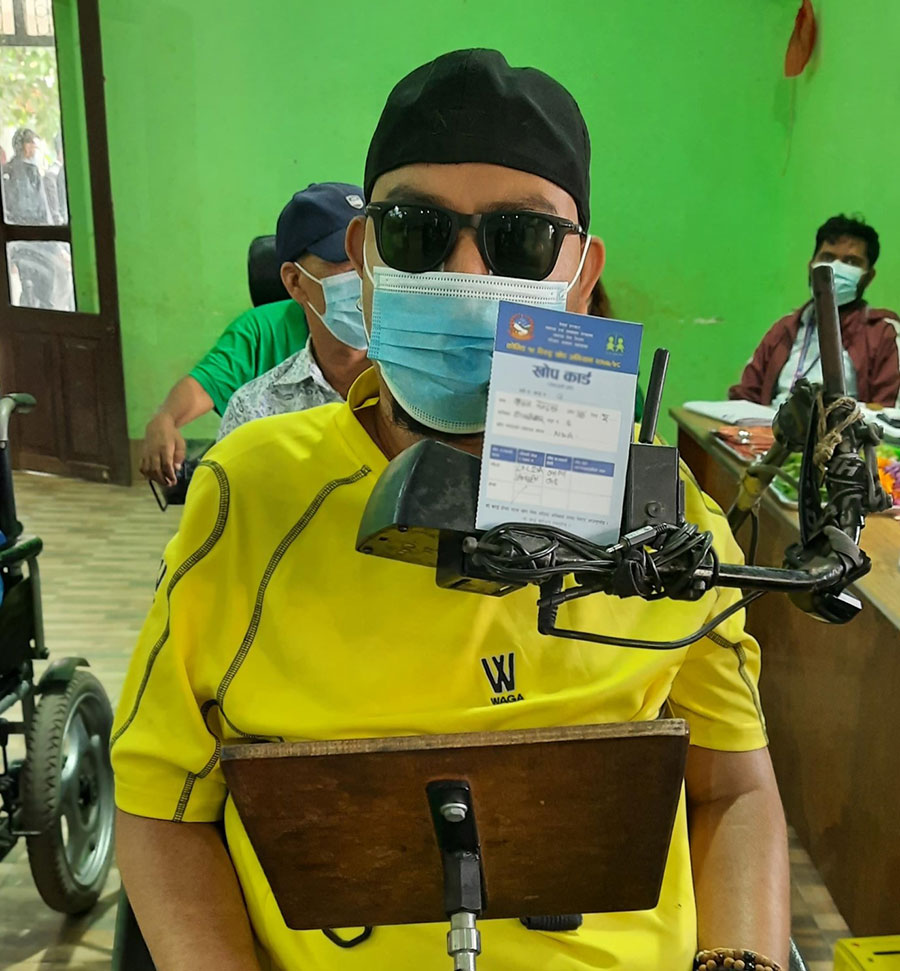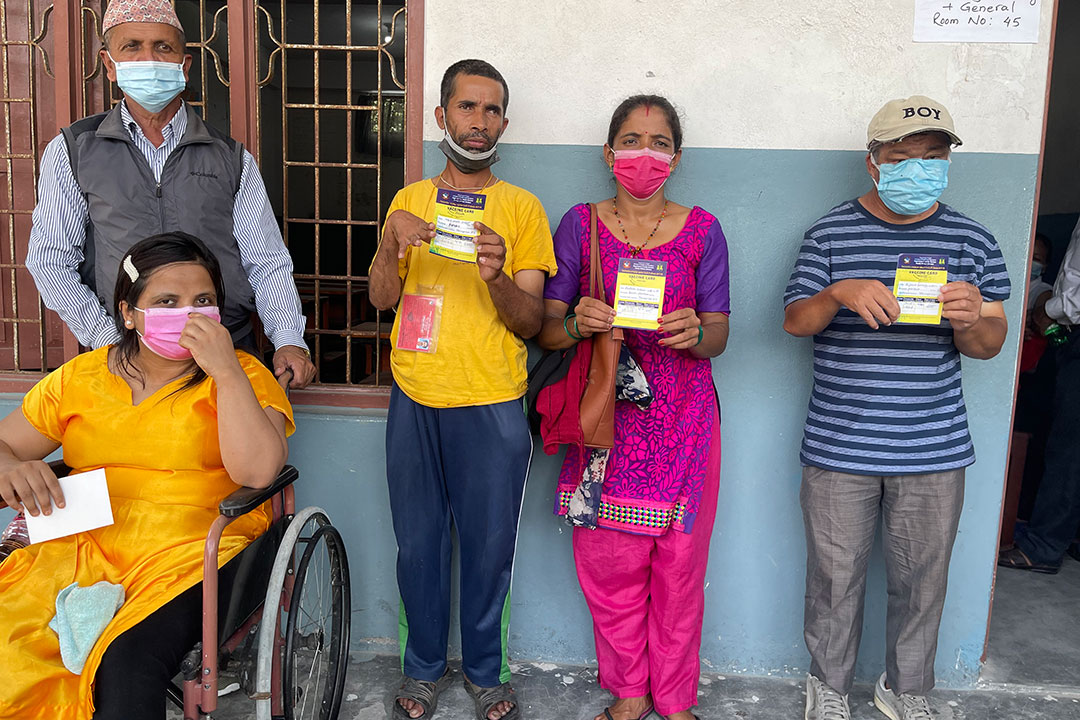COVID-19 vaccines: Nepal leaves no people with disability behind
"Leave no one behind" has been one of the core pledges of the SDG 2030 agenda. In light of the COVID-19 situation, it is vital to consider the plight faced by people with disability. Nepal has lessons for us all.
- 22 November 2021
- 5 min read
- by Gavi Staff

When Johnson & Johnson (J&J) vaccines first arrived in Nepal in mid-July, the Nepalese government decided to prioritise people with disability for vaccination. This consignment of J&J vaccines was the first batch of single-dose vaccines Nepal had received.
“To facilitate vaccination for people with disability, Nepal allocates J&J vaccines for them so they don’t have to come twice to be fully vaccinated,” explains Dr Vinod Bura, WHO Nepal’s team lead for immunisation.
When Nepal’s vaccination campaign kicked off in late January 2021, the government first prioritised frontline workers and the elderly for vaccination. Later, in mid-July, Nepal received over 1.5 million doses of J&J vaccine from the US, donated through the COVAX Facility, which eased the severe shortage of vaccines.
It was at this point that the Nepalese government decided to prioritise people who are more vulnerable to the pandemic due to underlying societal or biomedical factors for vaccination. This included people with disability, workers in risky positions, migrants, refugees and prisoners.
Recalling the first day of the J&J vaccine launch at an orthopaedic hospital in Kathmandu, where many patients had a disability, Dr Vinod became emotional. “Many of them were alone in the hospital without family support. They were extremely worried about their own health and safety when COVID-19 hit the country.”
While lockdown, isolation, COVID-19 containment measures and the resource crunch have caused anxiety and stress across all populations, this situation is further amplified among people with disability.
Preventive measures such as social distancing and self-isolation could be challenging for these populations, especially for those with high support needs who rely on carers for daily activities. The COVID-19 situation has weakened the already fragile socio-economic status of people with disability.
“Nepal’s COVID-19 vaccine prioritisation plan for people with disability is providing them relief and hope,” says Dr Vinod. “I met this patient in his 50s in the vaccination site who used to be a writer. With his whole body paralysed, he is fully dependent on a carer. He told me he was surprised and very grateful when he learned that the government has prioritised them for vaccination.”

Photo credit: MoHP Nepal
Have you read?
Nepal is one of the few countries that has strictly followed the WHO SAGE prioritisation framework, prioritising COVID-19 vaccines for people with disability. Although the SAGE framework advises countries to prioritise people with disabilities and other disadvantaged populations in order to achieve vaccine equity, according to a Leonard Cheshire report very few countries did so.
Likewise, a recommendation report authored by the International Disability Alliance warned that people with disability will in practice be among the last groups accessing vaccination without specific prioritisation due to societal barriers, including inaccessible information on registration systems and inaccessible health services.
To overcome such barriers, the Nepalese government has been making a special effort to disseminate public information effectively. As well as audio, visual, print, and social media platforms, the government has involved telecommunication companies to help circulate COVID-19 messages to more than 90 percent of telephone subscribers in Nepal. In addition, television announcements were developed in sign language for the deaf, and braille was embossed on COVID-19 prevention flyers for the visually impaired.
Along with NGOs and health workers who work closely with people with disability, trained female community health volunteers, rural health workers, Nepal scouts and religious leaders were engaged and mobilised to reach communities and hidden marginalised populations. “The Nepalese government has demonstrated that well-designed policies have to go hand-in-hand with transparent and effective communication in order to be successful,” Dr Vinod adds.

Photo credit: MoHP Nepal
Yet, Nepal’s road to vaccine equity is not without some hitches. As in other countries, the lack of disability-disaggregated data caused a barrier in assessing the total number of people with disability in the country, as well as where and in what conditions they are living.
Because of this, the Nepalese government organised vaccination campaigns in hospitals and centres for people with disability. Standard messages and guidelines were also disseminated to all health workers at vaccination sites – whenever a person with visible disability or with a disability ID card comes to the site, they are eligible to receive COVID-19 vaccines.
According to Dr Vinod, while it is difficult to precisely measure what percentage of the population with disability are vaccinated due to a lack of good data, around eight to ten thousand people with disability have benefited from the prioritisation plan. To better understand progress, WHO and the Nepalese government are planning to carry out a rapid assessment in the near future.
“Leave no one behind” has been one of the core pledges of the SDG 2030 agenda. In light of the COVID-19 situation, it is vital to consider the plight faced by people with disability. More than ever, this pandemic and the resulting health resource crunch has highlighted the need to not leave anyone behind and reach the furthest behind first, particularly people with disability who are already facing severe barriers and marginalisation. Nepal has lessons for us all.
More from Gavi Staff
Recommended for you









